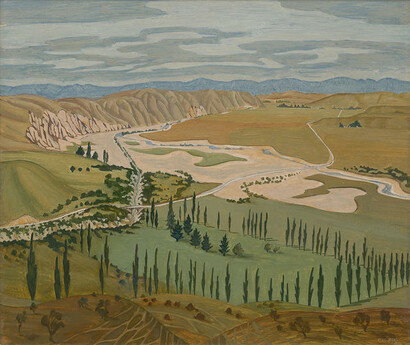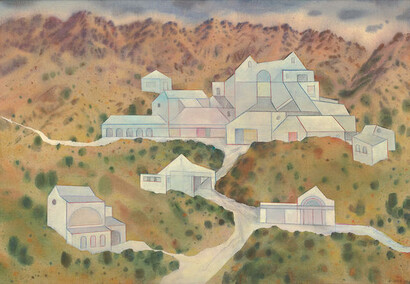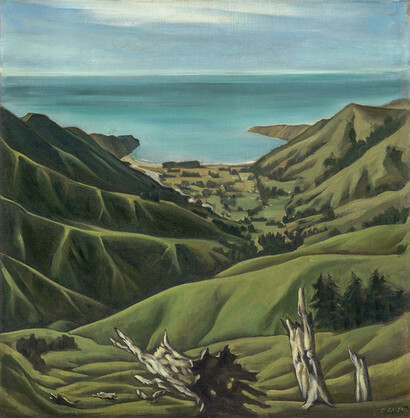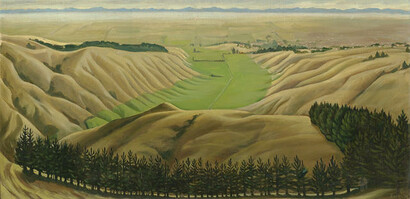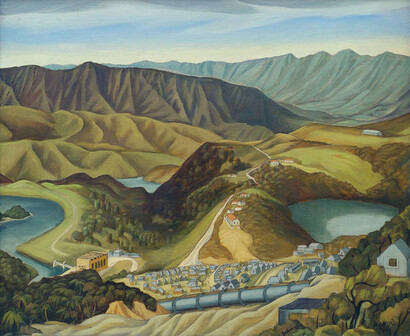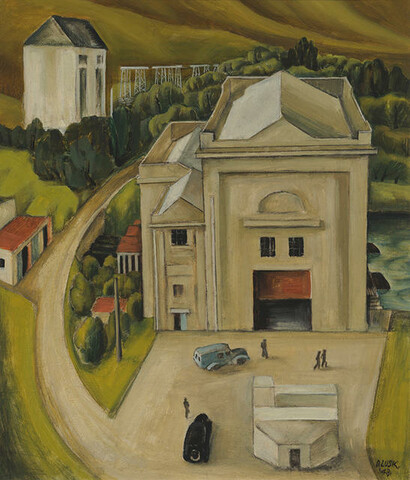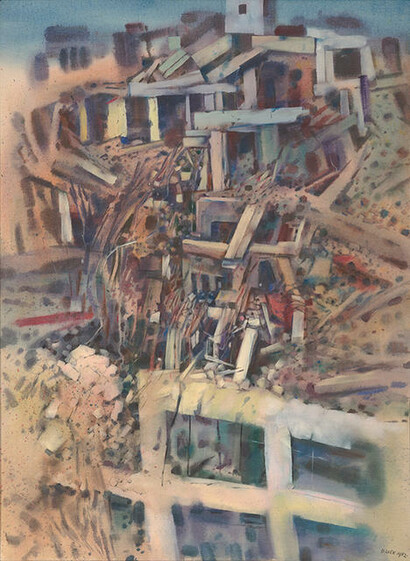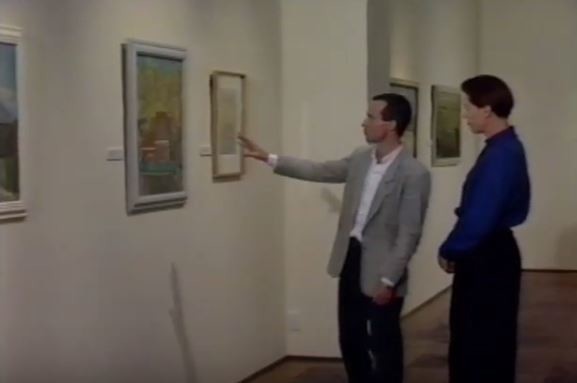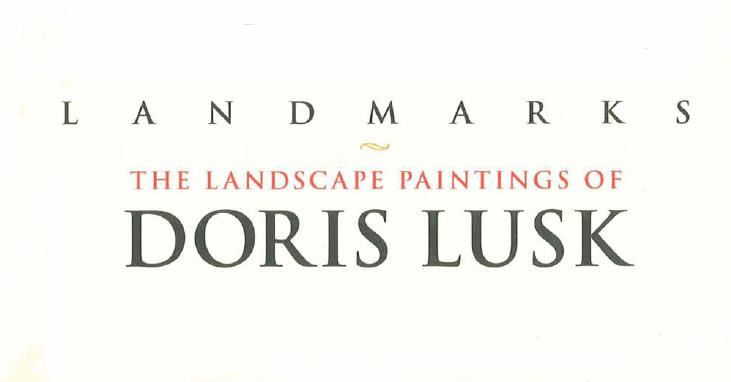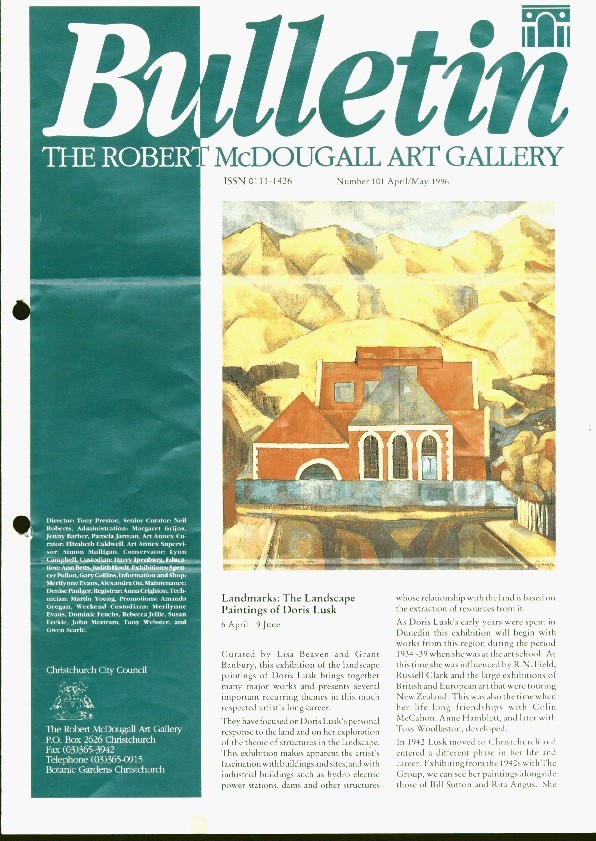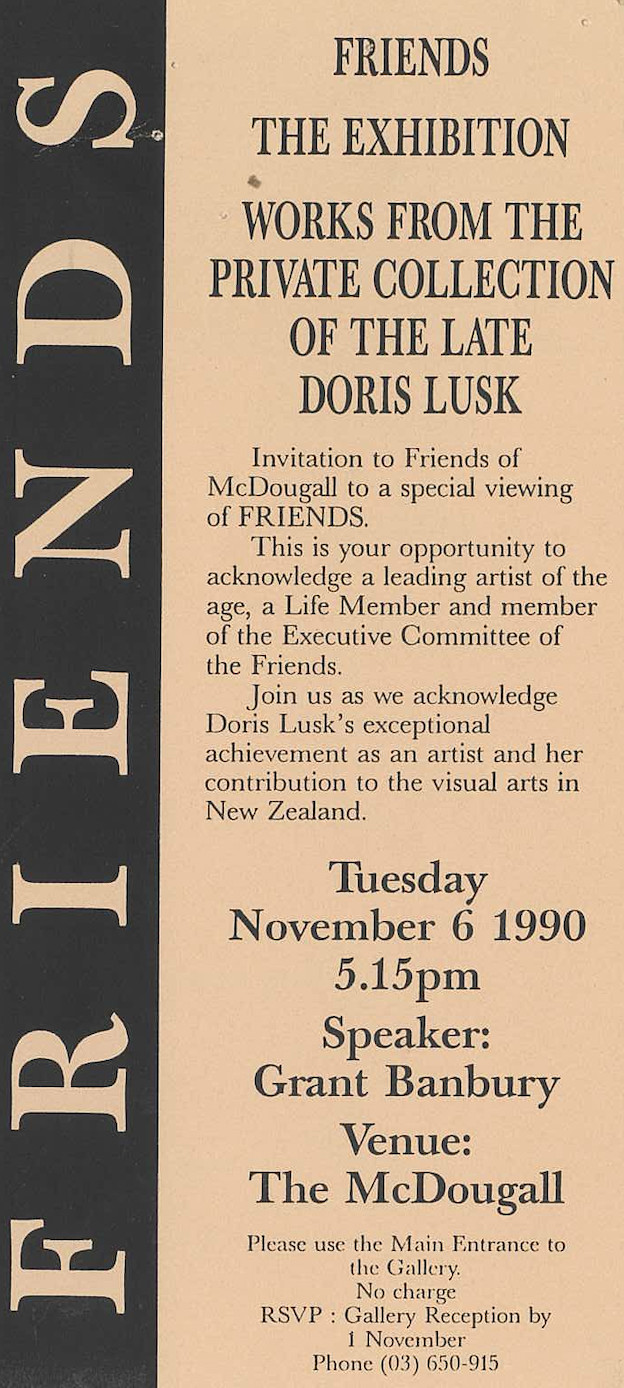This exhibition is now closed
Landmarks: The Landscape Paintings of Doris Lusk
6 April –
9 June 1996
Curated by Lisa Beaven and Grant Banbury, this exhibition of the landscape paintings of Doris Lusk brings together many major works and presents several important recurring themes in this much respected artist's long career. They have focused on Doris Lusk's personal response to the land and on her exploration of the theme of structures in the landscape. This exhibition makes apparent the artist's fascination with buildings and sites, and with industrial buildings such as hydroelectric power stations, dams and other structures whose relationship with the land is based on the extraction of resources from it. As Doris Lusk's early years were spent in Dunedin this exhibition will begin with works from this region during the period 1934-39 when she was at the art school. At this time she was influenced by R.N. Field, Russell Clark and the large exhibitions of British and European art that were touring New Zealand. This was also the time when her lifelong friendships with Colin McCahon, Anne Hamblett, and later with Toss Woollaston, developed.
In 1942 Lusk moved to Christchurch and entered a different phase in her life and career. Exhibiting from the 1940s with The Group, we can see her paintings alongside those of Bill Sutton and Rita Angus. She also travelled in 1948 to Lake Waikaremoana in the North Island to stay with friends who were working on a hydro-electric scheme at Kaitawa and, following this visit, produced some of her most powerful landscape images. These Paintings can also be approached against the background of the contemporary literary world. Allen Curnow, Charles Brasch and James K. Baxter were all at this time projecting in their writing a similar image of the land. They saw the New Zealand landscape as inhospitable, and menacing to the human presence.
During the 1960s Doris Lusk began to extensively explore the watercolour medium. Here technique and theme came together with unprecedented harmony in her images of the wharf at Onekaka in 1970 and later in the 1976 Arcade Awnings.
The 1970s and 1980s saw a clarification of the artist's painting concerns. At this time she completed several important series including the Kurow paintings, the Benmore Dam works, the Demolition series and the Imagined Projects. From creating variations on actual buildings she went on to concentrate on the structures themselves, firstly the Awnings and then in the Demolitions. This period was also marked by several changes in media.
A retrospective selection like Landmarks: The Landscape Paintings of Doris Lusk provides an ideal vehicle for an examination of the artist's continual technical inventiveness and willingness to experiment with a wide range of media. As the curator of this exhibition says, "More than any other-painter Lusk has continued to explore the implications of the relationship between the buildings and the land, using a variety of media in order to highlight her subject matter, her achievement has been to turn these building into monumental images, at once mysterious and powerful."
A series of special lectures scheduled for Sunday mornings April 14, 21 and 28 will give further opportunities to place this artist's work in the wider context.
('Landmarks: the Landscape Paintings of Doris Lusk', Bulletin, No.101, April/May 1996, pp.1-2)
Exhibition number: 600
